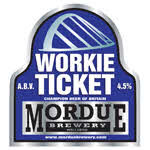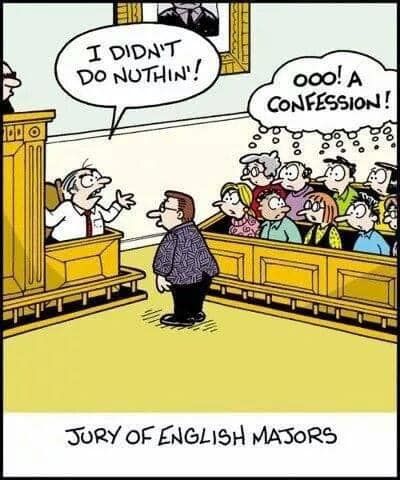My first full length programme in my AHRC-BBC New Generation Thinker tenure came out! I confess, I’m a bit slow in responding to it – its release was the trigger for me setting up this blog, which has taken a little longer than planned. But it was important for me to flag and respond to the programme at some point because of the issues I raised as part of it.
Prescript: I am far from being the first person to draw attention to the issues raised below,, and if you’re interested in these issues then you *must* read work by and follow Dra Megan Figueroa (and listen to her podcast, The Vocal Fries), Warda Farah, Dr Nelson Flores, Dr Jonathan Rosa, Prof. John Baugh, Dr Ian Cushing (and his work with Prof. Julia Snell), for a start. I am simply privileged to have been able to raise these issues via a medium to which I had access, from the point of view of a researcher into language acquisition and multilingualism.
So to the issues…
During the programme (around halfway through) I delivered a 3.5 minute postcard on an idea (transcript posted below). In that postcard, I discussed the conflation of “vocabulary” with “language”, especially in discussions of language development. In short, some influential but deeply flawed US-based research from the mid-90s (Hart and Risley 1995) suggested that richer children could hear up to 30 million words more than poorer children before starting school. This research has been used to claim that the “word gap” feeds inequalities in school, work and health outcomes down the line.
Culture and society have strong effects on vocabulary (and vocabulary development), as does individual variation (that is, the different performances of individuals, whether or not they share certain characteristics). Despite these things all affecting a child’s total vocabulary at any given time, word lists, supplemented by a few brief questions, are now often used as a shortcut for early identification of language delay. Researchers and policy makers also draw relationships between the number of words used by children in short observations and their general linguistic and cognitive development, not to mention later life health outcomes. Schools are critiqued when teachers and children use non-standardised Englishes, even in areas where this is the majority mode of speaking.
Most perniciously, many of the researchers and practitioners involved in these activities are white and Western, meaning that racialised and minoritised children and multilingual children disproportionately identified as being at risk of language delay or as receiving “less quality” input due to exacerbated observer effects and lack of cultural awareness.
The real life result of the “word gap”, of the framing of vocabulary as language, is therefore that minoritised parents feel policed and criticised, while middle-class white parents soak up this rhetoric of needing to force-feed language to their kids, panicking all the way up to preschool and buying into trends like baby sign classes (without recognising the decades-long and continuing struggles of D/deaf and Hard of Hearing children and their families in accessing real support for signed language input). As for the children, language stops being a tool for communication, for play and for artistry, and becomes yet another serving of “knowledge” to be consumed and regurgitated for the next relevant standardised test.
On listening to the programme, my parents-in-law, both former primary school teachers, felt that I’d made it quite clear that I wasn’t a “word gap” proponent (did you catch that?), but noted that I didn’t offer much in the way of solutions. That is fair. So let’s put some forward here…
Solution #1: Universal Basic Income
I’m not kidding. Poverty leads to parents working long hours at multiple jobs, to social isolation, to poor mental health amongst adults and children. All of these things will affect who is talking to children, when, and how, not to mention how children are set to receive and process the language input available to them. I have been accused when raising this as a solution of being idealistic – of course I am! But so were Hart and Risley (the “word gap” researchers), who called for “making quality child care affordable for all parents on an income-graded basis” (1995, p. 212).
If you want a quicker fix to your system, systematically and perpetually harming minoritized children by overdiagnosing them and making their parents feel policed isn’t the one. In fact, a quick fix can’t exist, because the causes of differential educational outcomes are systemic, not individual.
(Partial) solution #2: More core linguistics, taking in more languages, for trainee Speech and Language Therapists
Speech and Language Therapy (SLT) degrees in the UK are monitored and approved by the Health and Care Professions Council (HCPC) accredited by the Royal College of Speech and Language Therapists (RCSLT). They’re so tightly regulated that they do not differ much between universities. Hence I’m dunking on no particular university, provider or tutor when I say it’s *mindblowing* how little formal linguistics SLT trainees learn.
Syntax (grammar) is particularly poorly represented in the SLT curriculum – looking through a few undergraduate courses, students will be lucky to receive more than a few weeks’ training in syntax, usually in the first year of the degree, and almost always from an applied or developmental point of view.
This means that SLT trainees spend very little time just thinking about, looking for and comparing patterns in different languages and getting to know the *system* before thinking about how it might go awry. It’s like being given a manual to fix a faulty carburettor when you’ve only ever seen a car, once, from a distance.
Interestingly enough, none of the courses I looked at specified *which* language systems would be studied in any detail – which is to say, which languages. That probably means that English will predominate, despite the need for a deep understanding of multilingualism on a social and formal level. Moreover, given that a lot of time is consecrated to phonetics and the vocal tract, I’d imagine that signed languages are particularly poorly represented.
So – let’s call for more linguistics for SLT trainees (a whole year more, if the clinical part of the curriculum just can’t budge!), in particular more on syntax and morphology, and more than just English and/or spoken languages. This means that SLTs will be far more effective at identifying whether there is any form of language difference deeper below the surface, whose roots aren’t so culture-dependent. In other words, they’ll have a much better sense of what the average car looks like before wielding their toolkit.
(Partial) solution #3: Greater diversity in SLTs and in the education sector
SLTs and teachers are still overwhelmingly white and from middle-class backgrounds, as is the research they learn from, and this does diverse classrooms a real disservice. How exactly to make these professions both more attractive and more welcoming to racialised, minoritised, multilingual students…I’m not sure, and it certainly isn’t a question only for Higher Education to answer. But staffing classrooms and clinics with people who have different linguistic and cultural experiences will give children and families with similar experiences spaces to breathe and models to relate to and open up to. It will also broaden the horizons and experiences of children who currently see themselves (and only themselves) reflected back in their teachers.
(Partial) solution #4: More and consistent teaching of languages other than English (LOTE) from early years
In principle, children in England receive classroom teaching of an LOTE from age 7, though in reality that can equate to half an hour or less every few weeks, and the LOTE in question is typically French or Spanish. Take-up of LOTEs at GCSE and A-level are crashing through the floor, especially German. This means that English-based students are far less likely to have had any consistent exposure to a language other than English during their schooling than at any time in the past, and many still won’t get exposure to another language at home either.
That said, if my colleagues in Linguistics in MFL have anything to do with it, linguistics will be part of high school MFL teaching in the future. So greater exposure to other languages, and to explicit teaching in linguistics, would give all those future SLTs and teachers a leg up well before higher education.
(Just for contrast, children in Wales will learn Welsh, at least to GCSE level, and in Scotland, a 1+2 policy was enacted in 2012 to enable all children to learn a new language from Primary 1 (4-5 years old) and have access to another from Primary 5 (8-9 years old). Neither policy is perfect, and for sure, it costs money, but the benefits, especially post-Brexit, are both financial and cultural.)
Are these ideas too idealistic?
They’re not cost-free, if that’s what is meant by “idealistic”. But they all focus on tackling some of the root causes of language discrimination in early years (and later) in a way that “word-gap”-based language interventions and policies – at least those which cleave strongly to the idea that vocabulary = ability – do not.
Though there is one vocabulary-based intervention I could get behind…
(Partial) solution #5: Bin the “gap” narrative
Gaps, divides, poverty…in the case of “word gaps”, these highly emotive and visceral metaphors do us no favours at all. They all scream “deficit” instead of “difference”, “fix!” rather than “understand”. Framing the issue in terms of cheap binaries such as “word-rich” and “word-poor” also reduce the real structural inequalities underpinning differential educational outcomes to some kind of rhetorical flourish or trick. As John Baugh so eloquently puts it:
[W]hen linguistic differences among children from various socioeconomic backgrounds within the United States are examined closely, difference in vocabulary size is a highly visible tip of a larger linguistic iceberg that accounts for the sinking academic performance of many students for whom SAE [Standard American English] is not native […].
Baugh, 2009, p.40
This relates back to partial solutions 2 and 4 – we all need to know more about, and appreciate, linguistic differences before we can start to address educational inequalities effectively. The meaningful “knowledge gap” we need to start with is the one between what linguists, SLTs, practitioners, teachers know about language and what the children directly (or indirectly) in our care do with it.
The postcard itself…
What do the words “mummy”, “rip/tear”, “gentle” and “if” have in common?
You might have an idea if, like me, you have a toddler who has recently been for their two-and-a-half-year check up. At this meeting, a milestone missing from baby books and memory boxes, we were presented with a seemingly random collection of nouns, verbs, adjectives and function words. Based on the “practitioner use only” notes, our child was expected to use 18 or more of these words by this age.
This vocabulary list, along with a few supporting questions, would determine whether our child was at risk of a language delay. Language, in all its complexity, beauty, trickery and depth, reduced to a word list, and vocabulary used as a direct measure of success. This distillation is not uncommon – think of the familiar backhanded compliment to the bright schoolchild, that they “sound as if they have swallowed the dictionary”. In both contemporary and past Britain, from discourses on colonial Englishes to Ofsted reports, a person’s economic value is determined by the words they know.
The most recent incarnation of the lexicon-as-language stems from a study of how parents spoke to their to their children in the American Midwest in the late 1980s. The study suggested that children in so-called “welfare” families would hear on average 3 million words by the age of 32. Their peers in “professional” families heard on average 11 million words by the same age. The authors extrapolated from these figures to claim that by the time they had started school, welfare children would hear up to 30 million words fewer than their white-collar peers. This “word gap” was linked directly to the depressed achievements of such children in the education and professional spheres. Such vivid statistics seemed to argue for a clear correlation between words heard and educational achievement. The study still influences current educational policy in the UK and was a cornerstone of the research that led to my toddler’s checkup word list.
You may be able to hear in my tone the approach of a simple, functional conjunctive word, acquired quite late by children: BUT. This research, and many studies since, did not take into account the vibrant variation in how children in different communities are exposed to language. Many children learn language from sources other than their parents’ direct address and such practices are often linked with culture, race and identity – factors confounded in the Midwestern study. In the UK, millions of children grow up in multigenerational households, where overheard debates between adults and whispered games with cousins play at least as big a role in children’s language exposure as direct parental address. Certainly, the trajectory of language development in these environments will differ from the route taken by children who live only with their parents. My own research on English shows that seemingly minor differences in the types of questions that children hear can change the course of their grammatical development. Any child, as long as they are surrounded by conversation, will successfully acquire a – or many – languages, each rich in different ways. However, these languages may not be the language of instruction at school, or the English they speak may differ in subtle ways from that of the teacher. So here we uncover the true relationship between vocabulary and educational achievement – did you happen to hear in your home the same kind of English that your teacher did when they were small?
By ignoring sociocultural difference and placing the focus on word tallies as an investment in educational success, we alienate many families and panic others, creating a grotesque image of language as little more than fodder to be stuffed into our children. Must we force feed children big words if they are to achieve better grades at school and a desirable job down the line? I instead hope that learning to appreciate and accommodate each others’ belles phrases will still, ultimately, win out over linguistic foie gras.
References
Baugh, John. 2009. Meaning-Less Differences: Exposing Fallacies and Flaws in “The Word Gap” Hypothesis That Conceal a Dangerous “Language Trap” for Low-Income
American Families and Their Children, International Multilingual Research Journal 11(1), 39-51. DOI: https://doi.org/10.1080/19313152.2016.1258189
Hart, Betty and Todd Risley. 1995. Meaningful Differences in the Everyday Experience of Young American Children. Baltimore, MD: Paul H. Brookes




